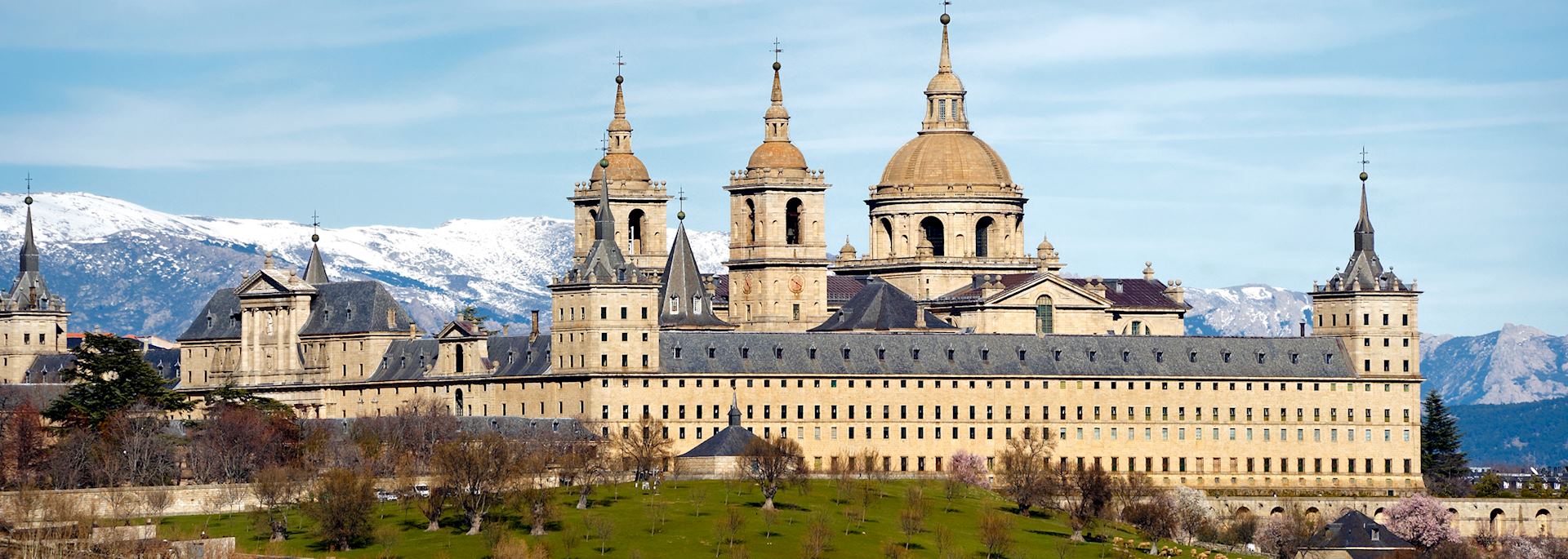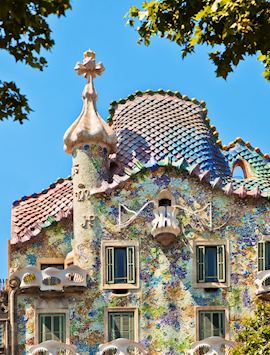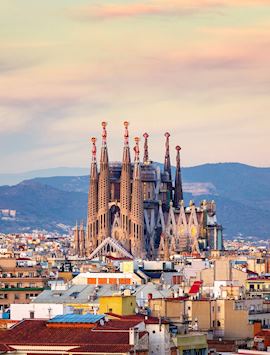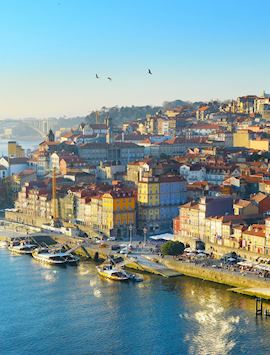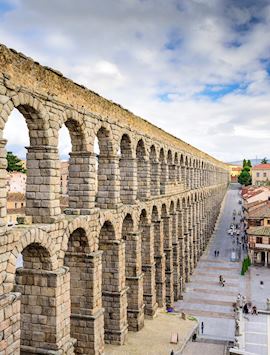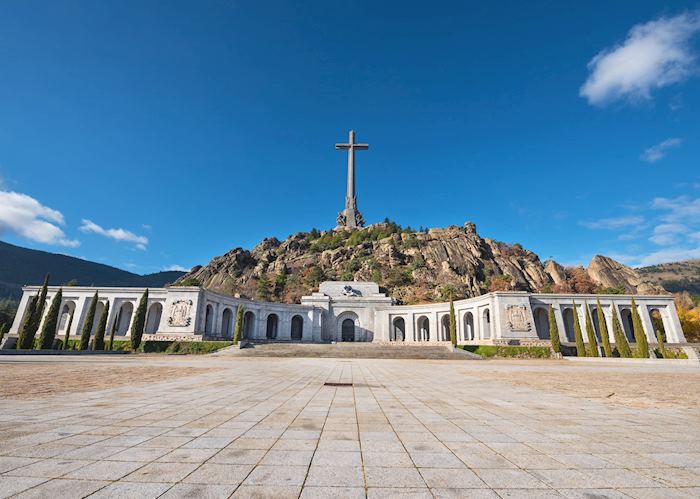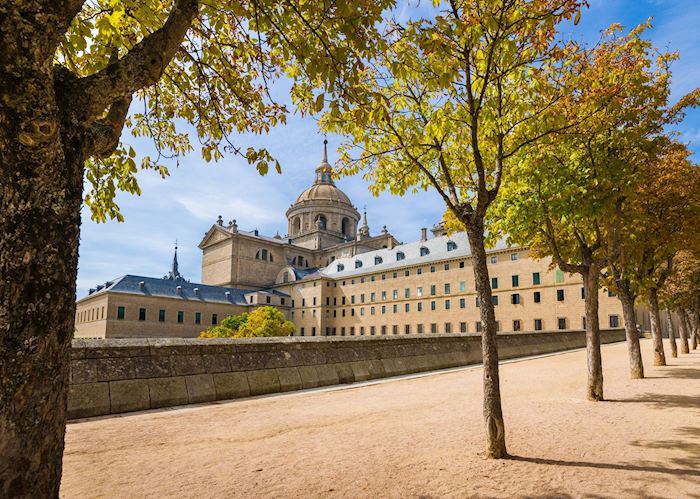Jump to:
Set against a backdrop of the Sierra de Guadarrama northwest of Madrid is one of Spain's most revered sites. The vast monastery-palace of King Felipe II, San Lorenzo de El Escorial, has been a retreat for Spanish kings for centuries. Nearby is the Valle de los Caídos (Valley of the Fallen), a colossal war memorial to victims of the Spanish Civil War and the final resting place of the dictator Franco. The enormous subterranean basilica and towering granite cross mark the site of 40,000 burials.
Built by King Felipe II between 1563 and 1584, San Lorenzo de El Escorial commemorates his victory over the French in the Battle of Saint Quentin. It hosted Spain's finest intellectuals, scientists and artists and their royal patrons. The royal palace, monastery and mausoleum remains the largest Spanish building of the Renaissance.
An enormous statue of San Lorenzo, holding the gridiron on which he was martyred, stands above the west gateway, one of the entrances. The Renaissance library takes up one building, decorated with frescoes and containing more than 40,000 precious books and manuscripts. Inside the rather austere basilica you'll find unusual flat vaulting, numerous statues and an intricate bronze and marble reredos (ornamental screen behind the altar).
Many of the monastery's treasures are in the frescoed chapter houses, where works by old masters such as Titian, Tintoretto, El Greco, Velázquez and Hieronymus Bosch line the walls. Below, the Panteón de los Reyes is where almost all of Spain's monarchs since Carlos I are interred in gilded marble tombs, while the royal children were laid to rest in the carousel-shaped Panteón de los Infantes.
A series of rooms known as the New Museums house many other works from the palace's original art collection. The paintings by 16th- and 17th-century Spanish and Flemish artists include works by Titian, Tintoretto, Van Dyck and Rubens.
By contrast, the private apartments of Felipe II are quite modest. His successors were less ascetic and occupied the Palacio de los Borbones with their fine furniture, wood carvings, tapestries and artworks.
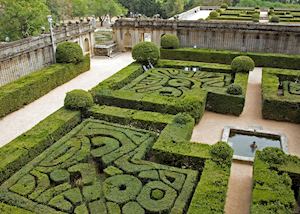 Outside, a series of courtyards and cloisters and manicured gardens provided a place for contemplation and reflection, along with several royal lodges that are as richly ornamented as the palace's finest rooms.
Outside, a series of courtyards and cloisters and manicured gardens provided a place for contemplation and reflection, along with several royal lodges that are as richly ornamented as the palace's finest rooms.
The atmosphere is entirely different at the controversial Valle de los Caídos 15 km (9 miles) north of El Escorial. The 20th-century Civil War memorial was commissioned by military dictator Francisco Franco and partly built by political prisoners. It looks out over the Valley of the Fallen, where the remains of 40,000 victims of the Civil War lie buried.
The memorial includes one of the world's largest basilicas, a Benedictine abbey and a towering cross set on an outcrop that can be seen from more than 32 km (20 miles) away.
Although the memorial commemorates victims on both sides of the conflict, it’s also the final resting place of Franco and his supporter José Antonio Primo de Rivera, the founder of the Falange movement. Both men are buried by the basilica's high altar. Many see it as a fascist memorial and consultations are under way on how to turn it into a point of reconciliation instead.
Best time to visit El Escorial
March to May and September to November are good time to visit as you’ll avoid the intense heat and the crowds of the summer months.
who's been there

Start planning your tailor-made trip to El Escorial & Valle de los Caídos by contacting one of our Spain specialists
-
617-223-4521617-223-4767
- Make an inquiry
Suggested itineraries featuring El Escorial & Valle de los Caídos
Our itineraries will give you suggestions for what is possible when you travel in El Escorial & Valle de los Caídos, and they showcase routes we know work particularly well. Treat them as inspiration, because your trip will be created uniquely by one of our specialists.
Places near El Escorial & Valle de los Caídos
- Madrid 25 miles away
- Segovia 25 miles away
- Ávila 32 miles away
- Toledo 51 miles away
- Salamanca 86 miles away
- La Rioja 154 miles away
- Córdoba 191 miles away
- Bilbao 195 miles away
- The Basque Country and La Rioja 197 miles away
- Asturias 210 miles away
- Oviedo 212 miles away
- San Sebastián 219 miles away
- Granada 238 miles away
- Andalusia 244 miles away
- Seville 244 miles away
- Galicia 248 miles away
- Pontevedra 268 miles away
- Costa del Sol 269 miles away
- Ronda 273 miles away
- Santiago de Compostela 279 miles away
- A Coruña 293 miles away
